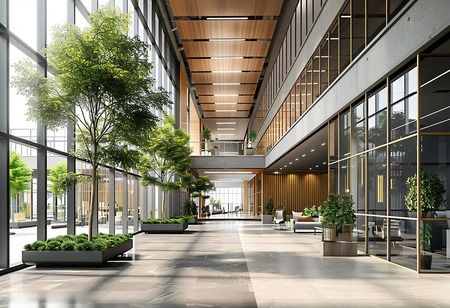
According to a joint report by Cushman & Wakefield and Table Space, the flexible workspace footprint in the top eight Indian cities reached 58 million square feet by the first half of 2024. Bengaluru topped the list with a 31% share of the total flex space, followed by Delhi-NCR with 16%, Pune and Hyderabad each with 14%, and Mumbai with 11%.
The report states that the initial half of 2024 saw an increase in flex supply by more than five million square feet, sustaining the progress observed during the previous two years where capacities expanded by eight to nine million square feet each year. In specific, there was a growth rate of 23% in 2022 and 18% in 2023.
Ramita Arora, Managing Director of Bengaluru and Head-Flex at Cushman & Wakefield in India, predicts that the demand for flex-space leasing could reach a record high this year. This is based on the fact that 70% of last year's total demand has already been met within the first half of 2024.
According to the report, over the past 3.5 years, this segment has experienced an average annual growth rate of between 35-37%, with a total of 450,000 seats being leased during that time. As such, it is now considered as one of the most rapidly expanding segments in the commercial office real estate market.
The report also noted a growing demand for flexible workspaces in Tier II and III cities, fueled by workforce decentralization and a greater focus on work-life balance. Flexible spaces now represent 11-13% of the total office space demand across the country.
The report states that the MOS model has become increasingly popular among both operators and occupiers. This success is attributed to tailored service options, shorter lease commitments, and technology advancements which have improved productivity.
A survey conducted by Cushman & Wakefield revealed that occupiers are highly inclined towards implementing digitalization in the workplace, along with prioritizing superior facility management, initiatives for employee well-being and achieving their sustainability goals.
According to the report, the IT industry was responsible for 40-50% of seat absorption over the past 18 months (2023 and H1 2024). Other significant contributors included engineering and manufacturing (14-18%), BFSI (9-12%), and professional services (11-12%).
The report also highlighted a notable increase in the number of active flex space operators, which has risen to 300 between 2021 and H1 2024. However, the top 5% of these operators hold more than 50% of the Grade A flex space market, with most of them specializing in managed office solutions.
We use cookies to ensure you get the best experience on our website. Read more...
Copyright © 2025 HomesIndiaMagazine. All Rights Reserved.